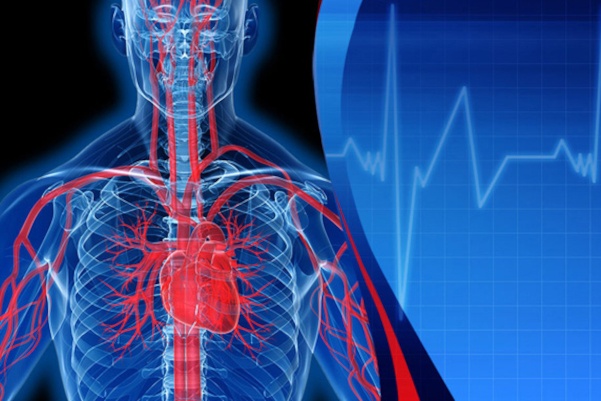
Heart: what is Brugada syndrome and what are the symptoms
Brugada syndrome is a rare heart condition that affects about five out of every ten thousand people and was first described in 1992
Brugada syndrome involves electrical changes in the heartbeat that, if left untreated, can lead to ventricular arrhythmia and thus pose a serious threat to the patient’s life
Brugada syndrome particularly affects adult males between 30 and 40 years of age who are familiar with the condition, but is also responsible for some cases of cot death.
The gold standard treatment for this condition is the implantation of a defibrillator, which is useful precisely to prevent the onset of arrhythmias.
Brugada syndrome: what it is and what the symptoms are
The electrical alterations underlying Brugada syndrome depend on a defect or malfunction of certain cells located on the surface of the right ventricle of the heart.
The main underlying cause is a genetic mutation, most commonly of the SCN5A gene, the mutation of which affects about 3 out of every 10 patients with Brugada syndrome.
The SCN5A gene transmits information for the creation of the structures that are responsible for the transport of sodium from the cells of the heart.
If the structures or their functioning are found to be impaired, sodium influx is compromised and the patient may develop ventricular arrhythmia under certain circumstances.
Brugada syndrome often has no obvious symptoms and patients only discover they are affected when ventricular arrhythmia occurs, which, as we have said, is a life-threatening condition.
This is why it is important to be aware of those manifestations that could be associated with Brugada syndrome, such as: fainting, sudden palpitations, tachycardia.
Risk factors: watch out for familiarity
Familiarity is the main risk factor: those who have parents or close relatives with Brugada syndrome could present the same genetic alterations.
The possibility of developing the disease in these individuals is also increased by another important risk factor, belonging to the male gender, and by hydroelectrolyte imbalances.
The febrile state may also cause an increased risk for these patients with Brugada syndrome.
In terms of prevention, it is also certainly important to avoid the use of those drugs associated with an increased risk of arrhythmia.
It is therefore essential that patients who know they are familiar with the disease and/or have developed the symptoms described above consult a cardiologist specialist.
As specified, in fact, Brugada syndrome, if left untreated, can lead to complications such as ventricular arrhythmia and cardiac arrest that can be fatal.
Brugada syndrome, what tests to do for diagnosis?
The main diagnostic tool for Brugada syndrome is the electrocardiogram (ECG) followed by other tests to rule out similar heart diseases.
This is a simple and painless examination that allows the specialist to assess the patient’s cardiological risk and consider the most suitable solutions for his or her clinical picture.
Be careful, however, to distinguish the simple Brugada electrocardiographic pattern from the actual syndrome: having a variant of the normal on the ECG tracing is quite different from having the actual disease (syndrome).
The syndrome is therefore to be considered a set of signs (ECG pattern) and symptoms (fainting, palpitations, cardiac arrest, family history of sudden death).
Brugada syndrome: how is it treated?
In most cases, in the presence of overt arrhythmias, implantation of a defibrillator may be necessary.
The defibrillator, placed in the vicinity of the heart, constantly monitors the heart rhythm and, in the event of alterations, sends electrical shocks that cause the heart to return to its regular rhythm.
At our institute, the latest type of defibrillator, i.e. subcutaneous, is implanted if clinical conditions permit.
This is a defibrillator whose catheters do not enter the venous system and thus the heart: everything remains under the skin.
The advantage is therefore a device that protects but at the same time does not damage the vascular structures: it is indicated for younger patients.
If, on the other hand, the pathology is less severe, the specialist may consider using drug therapy to prevent arrhythmias.
Read Also:
Emergency Live Even More…Live: Download The New Free App Of Your Newspaper For IOS And Android
Cardiac Arrest Defeated By A Software? Brugada Syndrome Is Near To An End
Heart: Brugada Syndrome And The Risk Of Arrhythmia
Heart Disease: First Study On Brugada Syndrome In Children Under 12 From Italy
Mitral Insufficiency: What It Is And How To Treat It
Mitral Valve Prolapse: Symptoms, Causes And Complications
Defibrillator: What It Is, How It Works, Price, Voltage, Manual And External
The Patient’s ECG: How To Read An Electrocardiogram In A Simple Way
Signs And Symptoms Of Sudden Cardiac Arrest: How To Tell If Someone Needs CPR
Mitral Valve Diseases, Causes And Symptoms
Heart Patients And Heat: Cardiologist’s Advice For A Safe Summer
Mitral Valve Diseases, The Advantages Of Mitral Valve Repair Surgery



